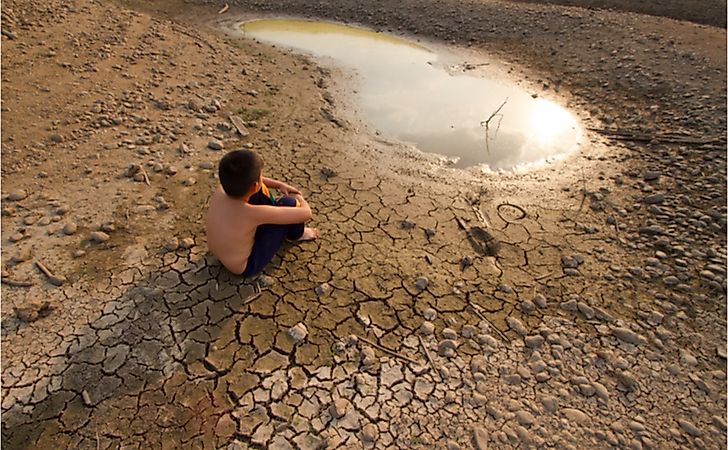How Will Climate Change Trigger Mass Migrations?

War, hunger, political persecution, and poverty have displaced about 24 million people over the past decade, but a new force, climate change, is set to trigger the largest mass migration ever witnessed. The United Nations forecasts that climate change will displace more than 200 million people by 2050, and the figure could rise to a billion. Beyond the headlines of extreme weather are millions of ordinary people who have been displaced and have to rebuild their lives. The exact number of climate refugees cannot be ascertained because it depends on how the world scales down on greenhouse gases and adapt to changing weather norms. In 2018, about 19 million people were displaced by natural disasters, and the population is projected to rise year-on-year due to worsening weather patterns. The rising temperature in the oceans and atmosphere is supercharging storms resulting in record floods, intense heatwaves, famine, and droughts.
Rising Seas
The ice sheets and glaciers of Antarctica and Greenland have been melting for years, but the rate has increased over the past three decades, raising a global concern. In the worst-case scenario, in which the global temperature rises by 5 degrees Celsius over the next eighty years, the oceans could rise by over 6.5 feet, flooding settlements such as Shanghai and New York and displacing over 200 million people. The ice sheets of Antarctica and Greenland account for 99% of the world's freshwater, but as more greenhouse gases are released into the atmosphere, the oceans get warmer, and the ice melt at unprecedented rates. If the sea level rise by 6.5 feet by 2100, over 690,000 square miles of land will be lost to the ocean, an area larger than the United Kingdom, Spain, France, and Germany combined. New York, London, and Shanghai would experience extreme flooding while Pacific and Atlantic islands would be completely uninhabitable. Some critical food production areas such as the Nile River Delta in Egypt and Sudan will also be flooded. Millions of people will migrate further inland to escape the frequent and more intense tornadoes and hurricanes.
Food Shortage
The number of people experiencing chronic food deprivation has risen to about 1 billion people. The situation is worsening in Africa, Central Asia, and South America. Lack of enough food is also leading to a rise in cases of anemia among women. Although food insecurity and malnutrition affect individual households, it can provoke regional conflict and instability. Crop failure and starvation in Central America are among the drivers of immigration across the United States border. Climate change is increasing the frequency and severity of extreme weather, including droughts and powerful storms that hinder agricultural practices. The number of extreme climate disasters such as floods, drought, and extreme heat has doubled compared to the 1990s. Such disasters lower agricultural productivity of staple crops such as maize, rice, wheat, resulting in rising food prices and loss of income. Should the current trends in global warming continue, the rising oceans would submerge agriculturally productive areas, while regions such as Northern Africa and the Middle East will become uninhabitable due to harsh weather. Millions of people will leave their homes and even countries in search of food and water.
Conflict Over Natural Resources
The global population is rising while natural resources are getting depleted. Two of the most contested resources are land and water. Conflict over the ownership of shared resources such as rivers risks escalating into full-scale wars. Climate change is pushing humanity into over-reliance on rivers and lakes as well as cultivating along with reliable water sources. The construction of the Grand Ethiopian Renaissance Dam on the Blue Nile has provoked a furious response from Egypt, which depends heavily on the Nile River. In 2011, Somalia experienced an immense drought, and the local terror group Al-Shabaab took control of rivers and streams to establish dominance over the local population. A domestic or international conflict over natural resources would likely displace millions.











